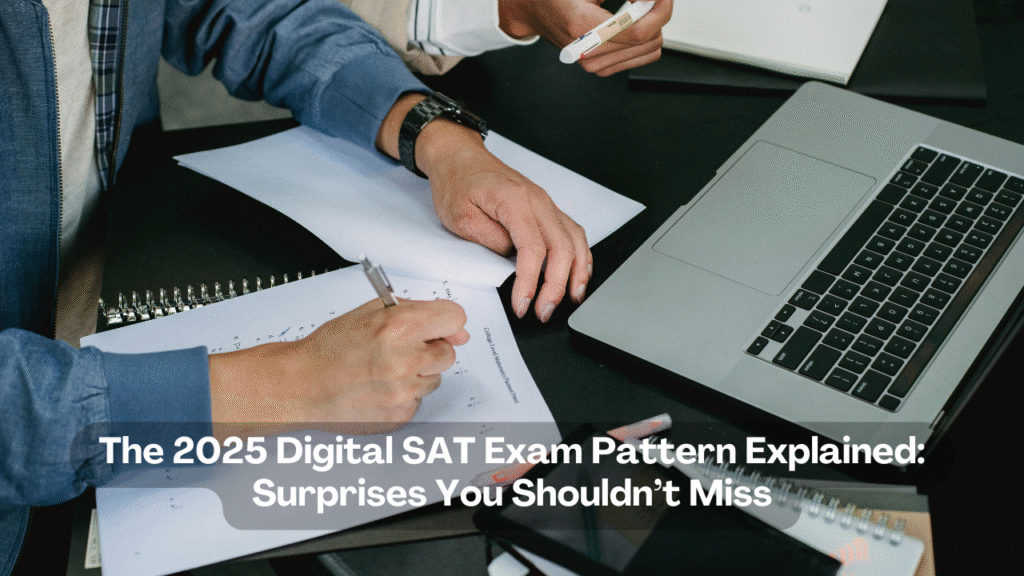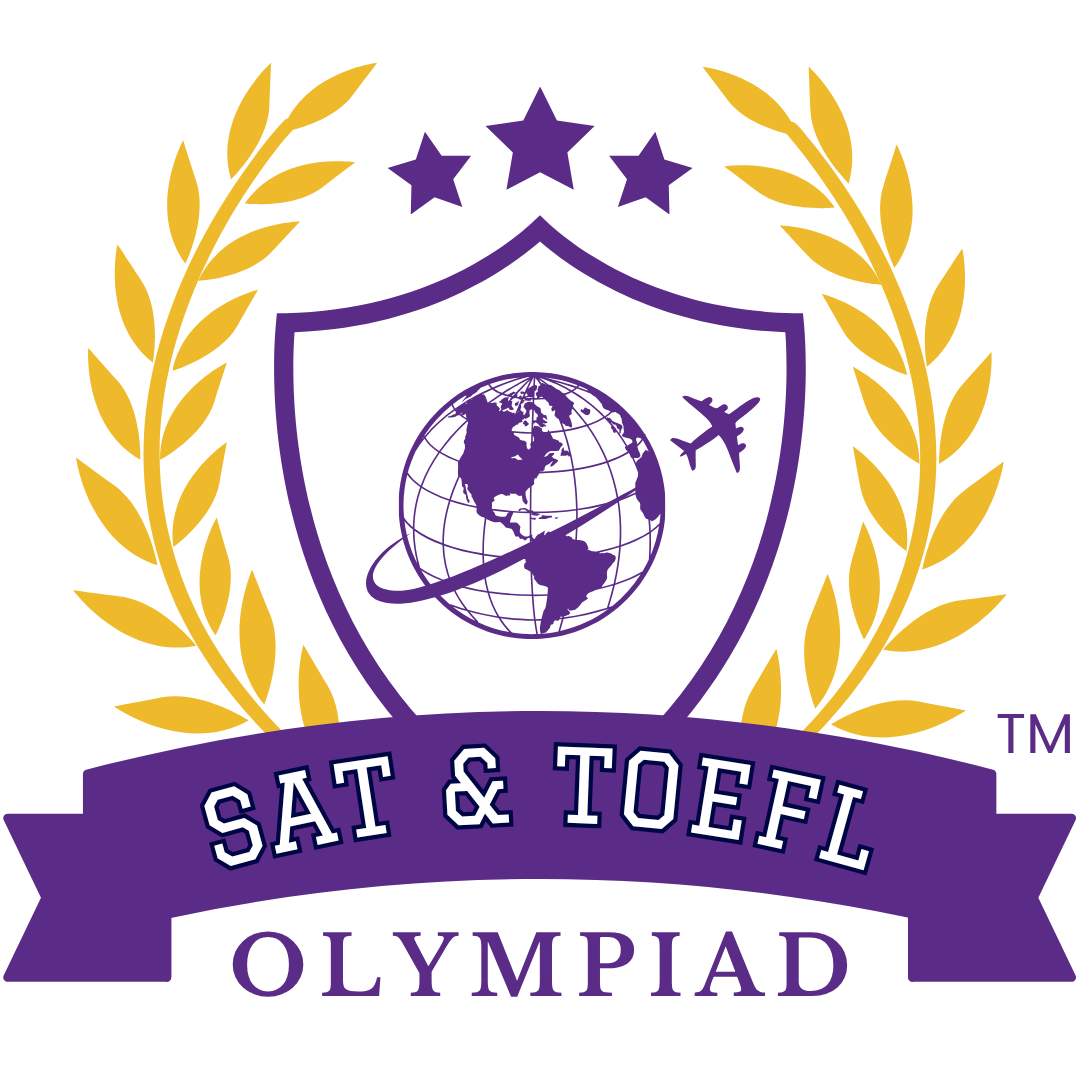The 2025 Digital SAT Exam Pattern Explained: Surprises You Shouldn’t Miss

Suppose you’re staring at that blinking cursor, wondering how on earth you’ll conquer a digital exam that decides so much of your future. In that case, I still remember the thump of my heartbeat when I learned that 1.7 million students sat for the SAT last year, most of whom will now face an adaptive, fully online format.
Between juggling homework, extracurriculars, and maybe even part-time work, it can feel impossible to squeeze in one more “must-do.” That’s exactly why I’m writing this guide. I’ve walked hundreds of students through the shift from pencils to pixels, and I know the tiny tweaks that turn anxiety into momentum. Over the next few minutes, you’ll get a clear view of the new section timings, the quirks of adaptive modules, and the smartest prep habits I’ve seen pay off, so you can stop guessing and start planning with purpose.
Table of Contents
- Overview of the Digital SAT Structure: Sections and Duration
- How Adaptive Testing Works in the New Format
- Differences Between Module 1 and Module 2 in Each Section
- Key Changes in the Reading & Writing Section
- What’s New in the Math Section: Topics and Tools
- On-Screen Features: Desmos Calculator, Timer and Flagging Questions
- Device and System Requirements for the Digital Test
- Testing Experience: In-School vs. Test-Center Setup
- How Scoring Works in the Digital SAT Pattern
- Preparing for the Digital SAT: Best Practices and Tools
1. Overview of the Digital SAT Structure: Sections and Duration
The streamlined SAT Exam Pattern now runs just 2 hours 14 minutes, trimming nearly an hour off the paper test . You’ll face two core sections, Reading & Writing (R&W) and Math, each split into two adaptive modules. That reduction means more mental energy per question and quicker results, delivered in days rather than weeks.
Key points
- 54 R&W questions in 64 minutes.
- 44 Math questions in 70 minutes.
- Score scale remains 400–1,600.
Want an early performance snapshot? Try the free, timed SAT Olympiad, a global competition that mirrors the digital interface. Ready to challenge yourself? Register here.
2. How Adaptive Testing Works in the New Format
Picture the adaptive SAT as a smart thermostat. Module 1 gauges your performance level; Module 2 then “warms up” or “cools down” the difficulty accordingly . A strong start unlocks harder questions that carry greater scoring weight. Because there’s no penalty for guessing, focus first on accuracy, then on speed.
Pro tip
After each practice set, ask, “Would these answers push me into the tougher second module?” Keeping that question in mind helps you prioritize precision over rushing.
3. Differences Between Module 1 and Module 2 in Each Section
| Section | Module 1 | Easier Module 2 | Harder Module 2 |
| R&W | Mix of easy, medium, hard | Mostly easy & medium | Mostly medium & hard |
| Math | Mix of easy, medium, hard | Heavy on foundational algebra | Focus on advanced algebra & geometry |
Because the algorithm shifts difficulty only once per section, aim for 80%+ accuracy in Module 1 to access the high-value pathway.
4. Key Changes in the Reading & Writing Section
Long passages are gone. Instead, you’ll work through concise, one-question excerpts covering literature, science, history and more . Expect four skill domains:
- Information & Ideas
- Craft & Structure
- Expression of Ideas
- Standard English Conventions
Practise reading short, varied texts, news articles, science blogs, even song lyrics, to build agility.
5. What’s New in the Math Section: Topics and Tools
Calculators are now permitted for the entire Math portion . Bluebook, the official test app, embeds a Desmos graphing calculator, letting you visualize algebra quickly while still jotting key steps on scratch paper. Content weightings remain:
- Algebra – 35%
- Advanced Math – 35%
- Data Analysis – 15%
- Geometry & Trigonometry – 15%
Treat Desmos as a helper, not a crutch: graph tricky equations, then confirm on paper.
6. On-Screen Features: Desmos Calculator, Timer and Flagging Questions
Bluebook offers smart utilities that can boost your efficiency :
- A hide-and-show timer, ideal for managing test anxiety.
- Annotation tools for active reading.
- “Mark for Review” flags so you can revisit challenging questions quickly.
Familiarize yourself with these features during practice mocks; they’ll save you precious seconds on test day.
7. Device and System Requirements for the Digital Test
You may bring a Windows or Mac laptop, an iPad or a school-managed Chromebook. Personal Chromebooks aren’t yet approved . Ensure at least 150 MB of free storage and download Bluebook one week before test day; the app will then deliver your admission ticket. Centers and schools keep loaner devices, so request one early if needed.
8. Testing Experience: In-School vs. Test-Center Setup
U.S. students may take the SAT during class hours, reducing travel stress, while international students typically sit at Prometric-style centers . Regardless of venue, you’ll find:
- Proctors and backup devices.
- Scratch paper and pencils supplied.
- Outlets for chargers.
Noise-canceling headphones aren’t allowed; practise in mildly noisy spaces to build concentration stamina.
9. How Scoring Works in the Digital SAT Pattern
The familiar 400–1,600 composite remains, but raw-to-scaled conversions differ by module difficulty . Subscores (1–15) highlight strengths in grammar or algebra, giving you precise areas to improve before retakes. Expect your results within four to five days, fast enough to adjust college lists, scholarship strategies and application timelines.
10. Preparing for the Digital SAT: Best Practices and Tools
- Diagnose early. Enter the SAT Olympiad for a free benchmark and speed drill.
- Use official practice. Bluebook full-length tests and Khan Academy’s adaptive drills align tightly with the real exam .
- Target weaknesses. Chart errors by skill domain, then drill those topics before your next mock.
- Rehearse the tech. Complete at least two full digital mocks on the exact device you’ll use on test day.
- Study consistently. Twenty focused minutes daily beats a six-hour cram session every weekend.
Conclusion
So where does all this leave you? The digital SAT is shorter, faster, and, when you know its rhythm, far more predictable than the paper test ever was. Remember the headlines: two core sections, adaptive difficulty, and results that land in days, not weeks. Take advantage of practice tools, run at least two full mocks on the device you’ll use, and track accuracy before speed. If you’re ready to see exactly where you stand, the free digital mock linked above is your next logical step. I’ll be here cheering you on, confident that with steady practice and a clear roadmap, you’ll walk into test day feeling calm, prepared, and genuinely excited to show what you can do.
Frequently Asked Questions
1. Is the SAT Essay still offered in 2025?
No. The essay option has been fully retired, letting students concentrate on the core sections .
2. Can I bring my own calculator even though Bluebook provides one?
Yes, any calculator on College Board’s approved list is allowed. Many students prefer a familiar model for complex algebra.
3. How many times can I take the digital SAT?
There’s no cap; take it as often as test dates allow. Most colleges superscore, so strategic retakes can raise your composite.
4. Will colleges view digital scores differently from paper scores?
No. Admissions offices see the same 1,600-point scale, with no indicator of format.
5. Does adaptive testing make the exam harder?
It personalizes difficulty. Performing well early leads to tougher questions worth more points, but final scaled scores remain comparable.
6. What accommodations exist for students with disabilities?
All current accommodations, extra time, screen readers, breaks, transfer to the digital format. Apply through your school counselor.
7. How soon after the test will I receive my score?
Most students receive scores within four to five days, a welcome change from the two-week paper wait .
8. Do I need internet during the test?
No. After downloading the test file, Bluebook locks down. You’ll reconnect only to submit answers at the end.
Primary Sources
College Board: 2024 Program Results
